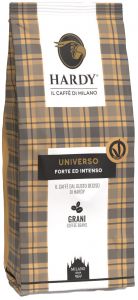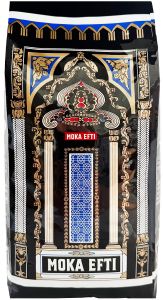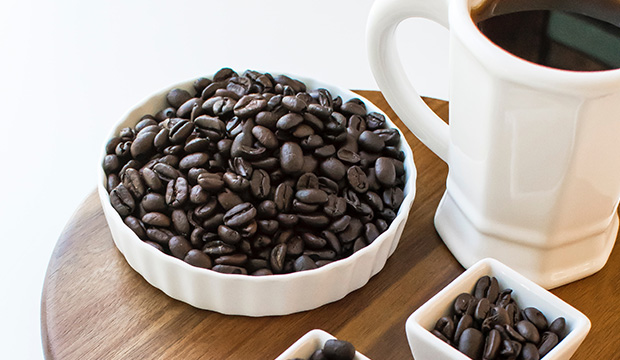
3-5 Workdays Article No. 1926
Aroma(s) : Chocolaty, Nutty
Article No. 1926

3-5 Workdays Article No. 10978
Aroma(s) : Chocolaty, Nutty
Article No. 10978

20-23
Workdays
Extended delivery time
Please note that if you purchase this item, you should expect a longer delivery time for your entire order. We cannot ship other items in your order, that are in stock, ahead of time.
Article No. 1570
Aroma(s) : Nutty, Malty
Article No. 1570

3-5 Workdays Article No. 10094
Article No. 10094

3-5 Workdays Article No. 10746
Article No. 10746

3-5 Workdays Article No. 10017
Aroma(s) : Chocolaty, Nutty
Article No. 10017

3-5 Workdays Article No. 10234
Aroma(s) : Chocolaty, Nutty
Article No. 10234

3-5 Workdays Article No. 10098
Aroma(s) : Chocolaty, Nutty
Article No. 10098

3-5 Workdays Article No. 10180
Aroma(s) : Chocolaty, Malty
Article No. 10180

3-5 Workdays Article No. 1930
Aroma(s) : Chocolaty, Malty
Article No. 1930

3-5 Workdays Article No. 10226
Aroma(s) : Chocolaty, Nutty
Article No. 10226

3-5 Workdays Article No. 11007
Aroma(s) : Chocolaty, Fruity
Article No. 11007

3-5 Workdays Article No. 11049
Aroma(s) : Chocolaty, Nutty
Article No. 11049

Unavailable Article No. 1569
Aroma(s) : Nutty, Malty
Article No. 1569

Unavailable Article No. 11033
Aroma(s) : Chocolaty, Nutty
Article No. 11033

Unavailable Article No. 10163
Article No. 10163
Robusta Coffee Beans: Bold Flavor for Coffee Connoisseurs
Robusta coffee beans often stand in the shadow of their more famous sister Arabica – unfairly so!
Discover the unique characteristics, benefits, and distinctive flavor profile of this underestimated coffee variety that's winning over more and more enthusiasts.
1. The Robusta Bean: Origins and Botany
The Robusta coffee plant (Coffea canephora) was only discovered in Central Africa in the 19th century – much later than Arabica. Today it's cultivated worldwide in tropical regions.
Did You Know? Robusta represents about 30% of global coffee production and is prized for its resilience and unique flavor characteristics that many coffee lovers are just beginning to appreciate.
Botanical Characteristics
- Plant Height: Up to 20-26 feet (compared to 8-15 feet for Arabica)
- Leaves: Larger and rounder than Arabica plants
- Flowering: Self-incompatible (requires cross-pollination)
- Fruit: Smaller cherries with rounder beans
- Genetics: 22 chromosomes (Arabica has 44) – provides higher disease resistance
2. Main Growing Regions for Robusta Coffee
Robusta beans thrive at lower altitudes from 0-2,600 feet and prefer a humid, tropical climate with consistent temperatures between 75-85°F (24-29°C).
The Leading Robusta Producers
| Country | Production Share | Characteristics |
|---|---|---|
| Vietnam | 40%+ of global Robusta | World market leader, consistent quality |
| Brazil | 25% of global production | Largest coffee producer, increasing Robusta cultivation |
| Indonesia | 15% of global production | Known for distinctive, characterful varieties |
| Uganda | 8% of global production | Africa's leading Robusta producer |
| India | 5% of global production | Famous for premium Monsooned Robusta |
The climatic conditions and soil composition of each growing region significantly influence the flavor profile of Robusta beans.
3. The Distinctive Flavor Profile
Robusta coffee is often underestimated, yet it offers an independent, distinctive aroma profile that's gaining recognition among specialty coffee enthusiasts:
Flavor Revolution: High-quality Robusta beans can surprise with accents of dark berries, rich fruits, and even spicy notes – especially with careful processing methods.
Typical Flavor Notes
- Base Notes: Earthy, woody, and nutty aromas
- Middle Notes: Dark chocolate, roasted nuts, caramel
- Body: Full-bodied, robust, and creamy
- Acidity: Significantly lower than Arabica
- Finish: Long-lasting, often with a slightly bitter conclusion
4. Caffeine Content and Bioactive Compounds
Robusta beans are renowned for their high caffeine content, which provides natural protection against pests and gives coffee lovers a powerful energy boost.
Nutritional Profile Comparison
| Component | Robusta | Arabica | Health Impact |
|---|---|---|---|
| Caffeine | 2.2-2.7% | 1.2-1.5% | Enhanced alertness, metabolism boost |
| Chlorogenic Acids | 7-10% | 4-6% | Antioxidant properties |
| Antioxidants | Up to 60% higher | Baseline | Cellular protection, anti-inflammatory |
| Lipids | 10-12% less | Higher | Affects mouthfeel and crema |
| Natural Sugars | Lower | Higher | Explains higher bitterness |
Health Benefits: The higher concentration of antioxidants and chlorogenic acids makes Robusta an interesting option for health-conscious coffee drinkers, as these compounds are associated with numerous positive health effects.
5. Sustainable Advantages of Robusta Cultivation
 The Robusta plant offers significant ecological and economic benefits that make it increasingly important for sustainable coffee production:
The Robusta plant offers significant ecological and economic benefits that make it increasingly important for sustainable coffee production:
Environmental Sustainability
- Natural Resistance: Requires up to 50% fewer pesticides than Arabica
- Water Efficiency: Needs up to 30% less water than Arabica cultivation
- Climate Resilience: Better adapted to rising temperatures and climate variability
- Biodiversity: Can be grown in mixed cultures and agroforestry systems
Economic Advantages
- Higher Yields: 2-3 tons per hectare (Arabica: 1-1.5 tons)
- Earlier Harvest: Productive after 2-3 years (Arabica: 4-5 years)
- Longer Lifespan: Productive for up to 30 years (Arabica: 15-20 years)
- Lower Cultivation Risk: Less susceptible to diseases and climate fluctuations
These characteristics make Robusta the more sustainable choice for the coffee industry in the face of climate change challenges.
6. Processing Methods and Quality Levels
The quality of Robusta coffee is significantly influenced by the processing method:
Processing Methods
- Natural Process (Dry): Traditional method where the entire coffee cherry is dried; intensifies earthy, fruity notes
- Washed Process (Wet): Removal of fruit pulp before drying; creates cleaner, less rustic flavors
- Honey Process: Partial removal of fruit pulp; balances sweetness and body
- Monsooned Process: Practiced in India; beans are exposed to controlled monsoon climate conditions, creating unique spicy notes
Quality Classifications
Unlike Arabica, Robusta often lacks standardized quality grading. However, experts distinguish between:
- Commodity Robusta: Mass-market beans for instant coffee and budget blends
- Premium Robusta: Carefully cultivated and processed beans with improved flavor profiles
- Specialty Robusta: High-quality beans scoring over 80 on the Specialty Coffee Scale
Industry Evolution: The emerging "Fine Robusta" movement is working to establish quality standards as rigorous as those in the specialty Arabica segment.
7. Ideal Brewing Methods for Robusta
Robusta coffee reaches its full potential with specific brewing methods:
Perfect Robusta Brewing
- Espresso: The classic use – Robusta produces consistent, hazelnut-brown crema and intense flavor
- Moka Pot/Bialetti: Steam pressure emphasizes chocolatey and nutty notes
- Vietnamese Drip (Phin): Slow extraction for concentrated, sweet coffee
- French Press: Emphasizes full body and creamy texture
- Cold Brew: Increasingly popular due to full body and low acidity
Roasting Recommendations
| Roast Level | Effect | Flavor Notes |
|---|---|---|
| Medium-Dark Roast | Reduces bitterness | Emphasizes chocolate and nut flavors |
| Slow Roasting | Develops complexity | Mellows sharper notes |
| Temperature | 20-25°F higher than Arabica | Optimal aroma development |
Pro Tip: Let Robusta coffee rest 7-10 days after roasting to allow optimal flavor development.
8. Robusta in Modern Coffee Blends
 Robusta beans play a crucial role in the coffee world, bringing unique characteristics that complement Arabica in sophisticated blends:
Robusta beans play a crucial role in the coffee world, bringing unique characteristics that complement Arabica in sophisticated blends:
Typical Applications
- Espresso Blends: 10-30% Robusta for better crema and body
- Italian Blends: Up to 40% Robusta for characteristic intense flavor
- Instant Coffee: Predominantly Robusta due to higher extraction yield
- Cold Brew: Increasingly popular use thanks to full body and low acidity
- Single-Origin Robusta: Growing market for premium varieties from Vietnam, India, and Uganda
Modern roasters are increasingly experimenting with high-quality Robusta beans as standalone single-origin offerings, especially when enhanced through special processing methods.
9. Buying Robusta Coffee: What to Look For
When purchasing high-quality Robusta coffee, pay attention to these key aspects:
Quality Indicators
- Origin Designation: Single-origin with precise location details
- Processing Method: Clearly declared (Natural, Washed, Honey, etc.)
- Roast Date: Freshly roasted with clear roast date indication
- Bean Quality: Uniform size, minimal damaged beans
- Certifications: Fair Trade, Rainforest Alliance, or Organic seals as additional quality indicators
Storage Tip
Robusta coffee retains its aroma particularly well when stored in airtight, light-proof containers at room temperature. Unlike Arabica, it stays fresh longer thanks to higher oil and antioxidant content.
10. Conclusion: The Future of Robusta Beans
Robusta is experiencing a renaissance in the coffee world. With rising quality standards, innovative processing techniques, and growing awareness of sustainable agriculture, this resilient bean is gaining increasing importance.
Climate Change Champion: Given the challenges climate change poses to coffee cultivation, Robusta could play an even more important role in the coming decades. Researchers are simultaneously working on developing new hybrids that combine Robusta's resilience with Arabica's complex aroma profile.
For coffee lovers, it's worth setting aside prejudices and exploring high-quality Robusta varieties – they could be a delicious surprise and enrichment for any coffee collection.
Further Information
- Low-Acid Coffee: Ideal for Sensitive Coffee Drinkers
- The Ultimate Guide to Decaffeinated Coffee
- Arabica Coffee Beans: The Queen of Coffee Culture


